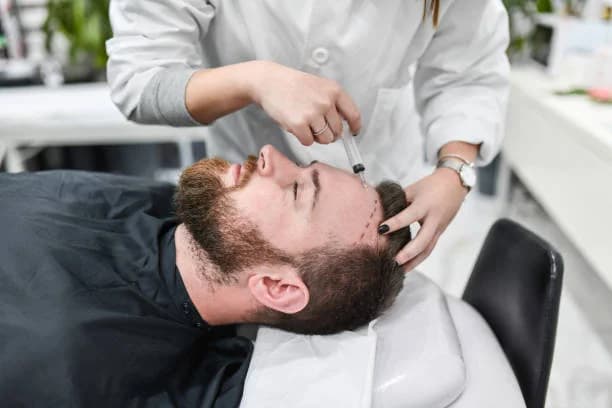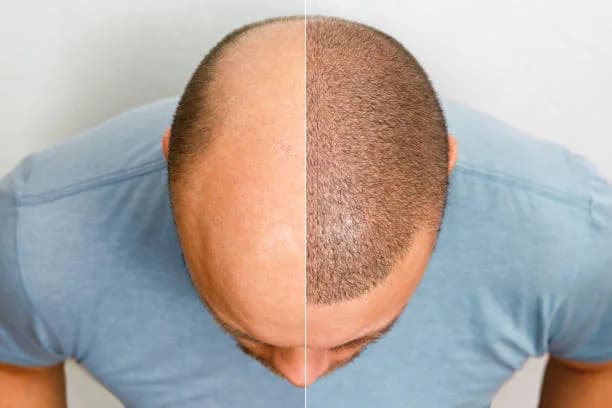For those considering hair restoration, it is essential to be well-informed about every step of the process. Due to the advancements in medical science, the hair transplant process has become a precise life-changing surgery. With a natural-looking result, hair transplant has given men and women options to deal with hair loss. Unfortunately, not everyone is suitable for the procedure. Read on to see what are the key factors determining if you are a good candidate for hair transplant surgery. For hair transplant side effects click here…
Hair Transplant surgery candidates
Those with healthy hair growth at the back and sides of their head may be candidates for hair transplant surgery. Donor areas are the places on the head from which grafts and flaps are taken. Other factors, such as hair color, texture, and waviness or curliness may also affect the cosmetic result. There are several techniques used in hair replacement surgery. Although a hair transplant surgery can enhance your appearance and self-confidence, it may not match your ideals.
Candidates must keep in mind that every hair replacement technique uses the existing hair and tries to find the most efficient use for it. Remember, there are limits to what can be accomplished. An individual with very little hair might not be advised to undergo hair transplant surgery.

Good Hair Transplant Candidate
Good hair transplant candidates include those looking to make a change in the fullness and density of their hairline. Patients need these conditions to meet the hair transplant standards:
Typical male pattern baldness (MPB) in both men and women means the person loses hair in the front, top, or crown with a preserved area on the back and sides of the scalp
High hairline in a woman makes her face look less proportional or less feminine
Hair loss secondary to burns or trauma
Looking to make a change to their hairline
Lack of facial hair or missing part of it
Scarring in hair-bearing areas from trauma or medical procedures such as neurosurgical scars and facelifts
Want to improve the unnatural appearance of older transplant results by adding density, removing and replacing old and pluggy grafts, and redesigning the hairline

Critical details related to a successful hair transplant
Age: Technically, you can have a hair transplant at any age.
Health Conditions: Before considering any type of surgical procedure, you need to be healthy enough to undergo a medical procedure and you must have a healthy immune system.
Lifestyle: Healthy lifestyle choices, such as eating a balanced diet, exercising, and avoiding stress, not only help you feel better but also are good for your skin, hair, and nails.
Hair Loss Classification: Two of the most important factors for determining whether you’re a good hair transplant candidate are the amount of hair you’ve already lost and the amount of donor's hair you have available to transplant to the thinning areas of your head.
Commitment to Post-Procedure Aftercare: Your commitment to following the aftercare instructions from your physician is an important factor in the success of your hair transplant procedure.
Setting Realistic Expectations: It’s important to set realistic expectations about what you can expect from your procedure. While a typical hair transplant takes only a few hours to perform, it will take several months to start seeing results.
Hair characteristics: There are several characteristics of the hair that may or may not make you a good candidate for a hair transplant.

Hair color: Hair color is one of the biggest factors that will determine how effective the result is. This is due to the contrast between hair color and scalp color. The bigger the contrast between the two, the more obvious that balding appears.
Hair density: Hair density is one of the biggest factors when determining who will be a good candidate for a transplant. Those who have good hair density tend to be good candidates for hair transplantation surgery. Specifically, surgeons will look for a good density of hair follicles around the donor areas of the scalp – that is, to say, the back of the head and the sides of the scalp.
Hair texture: When looking at hair texture, those with curly or wavy hair can usually expect better results with fewer follicular units used.
Hair thickness: Similarly, to hair texture, hair thickness can determine whether or not a hair transplant will be successful. Those with thick hair require fewer drafts to get the same cosmetic effect as those with thinner hair.
Scalp flexibility: Scalp flexibility, also known as scalp laxity, is also something that is considered when determining the suitability of a candidate for a hair transplant. Whilst someone might have a high density of hair follicles in the donor areas, they may have other unfavorable hair characteristics that offset the benefits of this density.
Conclusion
Hair transplant surgery can be a viable solution for individuals experiencing hair loss, offering permanent, natural-looking results1. Good candidates for this procedure typically have healthy hair growth at the back and sides of the head, which serve as donor areas. Factors such as hair color, texture, and waviness or curliness may also affect the cosmetic result. It’s important to note that not everyone is a suitable candidate for hair transplant surgery. Individuals still experiencing rapid hair loss should ideally wait until their hair loss pattern appears to be permanent and hasn’t changed significantly in at least six months. An individual with very little hair might not be advised to undergo hair transplant surgery.
Read more: